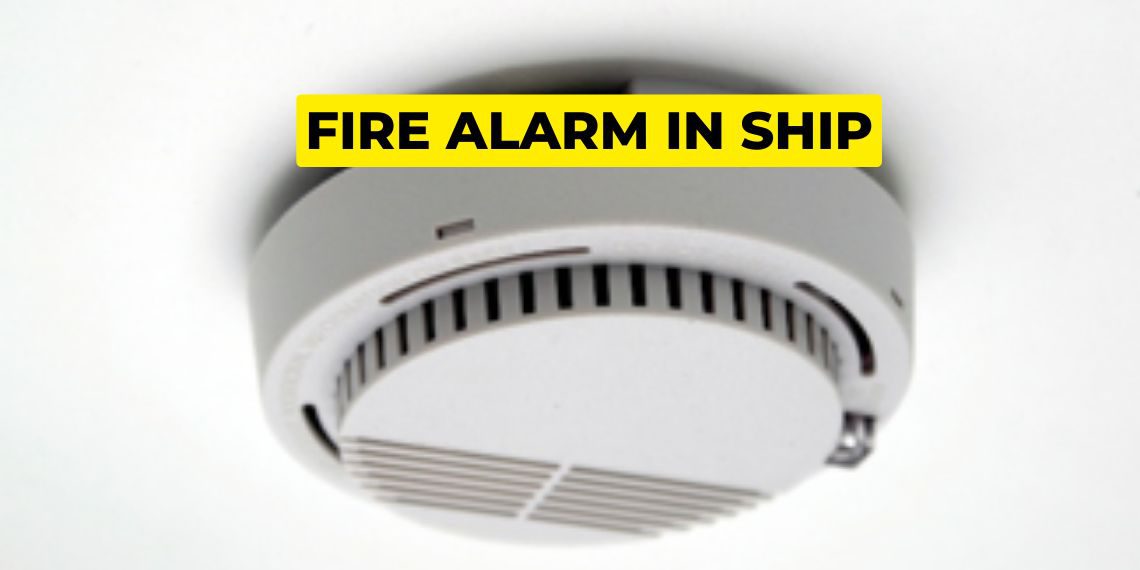Fire alarm in ship | What is Fire sensors, smoke sensors and flame sensors
Fire alarm are essential on ships because of the unique nature of the maritime environment. Ships are enclosed spaces where large amounts of flammable materials are stored, such as fuel, oil, and cargo. Additionally, ships have complex electrical and mechanical systems that can malfunction and create sparks or heat, increasing the risk of fire.
In the event of a fire, it is critical to detect it as early as possible to allow for timely response and evacuation. Fire alarms can alert crew members to the presence of smoke or fire, even in remote parts of the ship, enabling them to take appropriate action to extinguish the fire or evacuate the ship. Furthermore, maritime regulations require that all vessels be equipped with fire alarms and other safety equipment to ensure the safety of passengers, crew, and cargo.
The International Maritime Organization (IMO) sets the standards for fire safety on ships through the International Convention for the Safety of Life at Sea (SOLAS) and other related regulations. In summary, fire alarms are essential on ships to detect fires early and allow for timely response and evacuation, as well as to comply with maritime safety regulations.
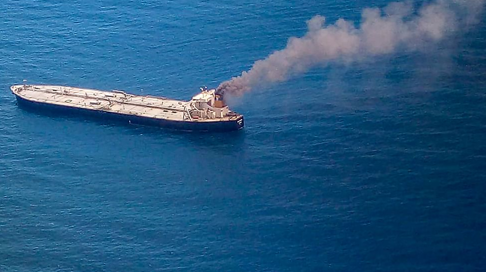
Let’s see what does FIRE stand for
F – Find
I – Inform
R – Restrict
E – Extinguish

Fire sensors:
Fire sensors are devices that detect and respond to the presence of fire or smoke. They are an essential component of fire detection and alarm systems and are used to alert occupants of the ship to the presence of a potential fire. Every sensor has its own number and by the help of number we get the location where the fire is taking place and it becomes easy for the crew to find the fire. There’s a routine that in every three months we need to test all the sensors fitted in board ship which is done by the Electrical Officer. ETO also maintains an excel sheet of date and location of fire alarm when tested out.
What are the types of fire alarm on ships?
There are different types of fire alarms on ship:
- Smoke sensor
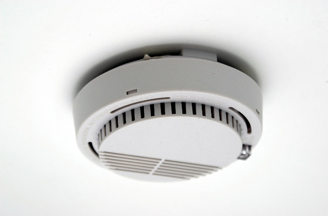
2. Heat Detector
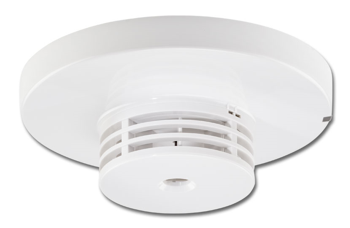
3. Flame sensor
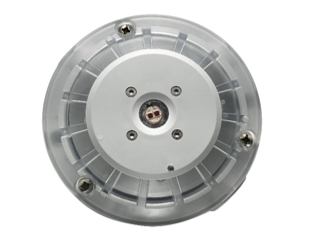
Smoke sensors:
A smoke sensor, also known as a smoke detector, is a type of fire sensor that detects the presence of smoke particles in the air. Smoke sensors are fitted on various places on board ship like Engine room, accommodation and pump room. Wherever there is fire smoke will be produced and there’s a smoke head fitted in the smoke detector which detects the smoke and an alarm will be raised.
How does a smoke sensor work?
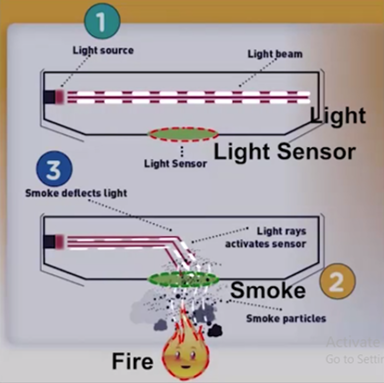
The smoke sensor work on a photoelectric effect by using a light source and a sensor to detect smoke. From the above figure we can see that in 1st case by using a light source and a sensor to detect smoke. The detector has a light source that emits a beam of light into a sensor chamber. In a normal state, the beam of light is not disrupted and does not reach the sensor as light travels on straight line.
In the 2nd case when there is a fire, smoke enters the sensor chamber, it scatters the light and reflects it onto the sensor, triggering an alarm. The detector can detect smoke particles even before the smoke becomes dense enough to be visible, allowing for early detection of a potential fire.
NOTE: Sometimes while cleaning and if dust goes into the smoke detector it can raise a false alarm so on board ship when these kind of cleaning is going on deactivate the alarm from Fire Control Panel. It is done to avoid false alarm which may disturb the people who are sleeping after their duty.
Flame sensors:
A flame sensor is a type of sensor that is used to detect the presence of a flame or fire. Flame sensors work by detecting the presence of infrared radiation emitted by a flame. When a flame is present, it emits infrared radiation that is detected by the sensor. The sensor then sends a signal and activate the system. It is fitted in places of Main Engine room, Generator, Purifiers and Boilers.
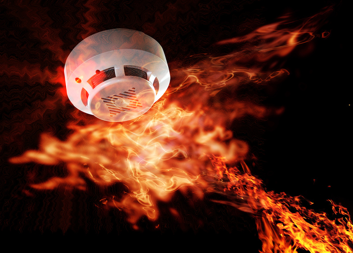
Heat detectors:
Heat detectors are devices that are designed to detect changes in temperature, which can indicate the presence of a fire. Heat detectors work by measuring the temperature in a given area and triggering an alarm if the temperature exceeds a certain threshold.
There are two main types of heat detectors:
- Fixed-temperature: Fixed-temperature heat detectors have a single temperature set point, and they trigger an alarm when the temperature in the area being monitored exceeds that set point. For example, a fixed-temperature heat detector might be set to trigger an alarm when the temperature in a room reaches 75 .
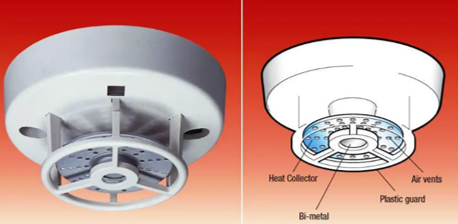
2. Rate-of-rise detectors: Rate-of-rise heat detectors, on the other hand, detect the rate at which the temperature is rising in a given area. They trigger an alarm if the temperature in the area rises at a rate that exceeds a certain threshold, regardless of the actual temperature. For example, a rate-of-rise heat detector might be set to trigger an alarm if the temperature rises by 50 or more per minute.
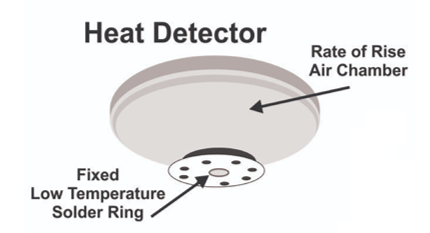
In ship rate-of-rise detectors are used in Galley, Smoke room and Laundry room because smoke is present in these areas due to which a smoke detector will not work.
Manual call point:
A manual call point, also known as a manual pull station, is a device used in fire alarm systems that allows individuals to manually initiate a fire alarm signal. The manual call point is typically located near exits or in corridors and is easily accessible in case of an emergency.
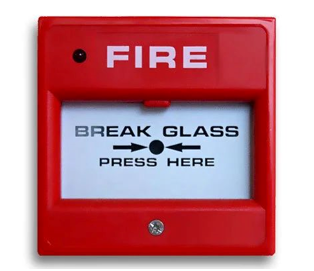
Manual call points are activated by breaking the glass or pressing a button, depending on the type of device. Once activated, the manual call point sends a signal to the fire alarm control panel, which activates the fire alarm system, triggering alarms. Manual call points are an important component of fire safety systems as they allow individuals to quickly and easily initiate a fire alarm signal in case of an emergency.
Note:
If you want to learn more about this topic, we suggest checking out our Combo package with the given link https://www.merchantnavydecoded.com/courses/c/ . It’s a great way to dive deeper into the subject through video explanations. This package covers all the important details and presents them in an easy-to-understand format. Watching the videos will help you grasp the topic better and make learning more enjoyable. So, we highly recommend giving our Combo package a try to enhance your knowledge on the subject.
Disclaimer :- The opinions expressed in this article belong solely to the author and may not necessarily reflect those of Merchant Navy Decoded. We cannot guarantee the accuracy of the information provided and disclaim any responsibility for it. Data and visuals used are sourced from publicly available information and may not be authenticated by any regulatory body. Reviews and comments appearing on our blogs represent the opinions of individuals and do not necessarily reflect the views of Merchant Navy Decoded. We are not responsible for any loss or damage resulting from reliance on these reviews or comments.
Reproduction, copying, sharing, or use of the article or images in any form is strictly prohibited without prior permission from both the author and Merchant Navy Decoded.


